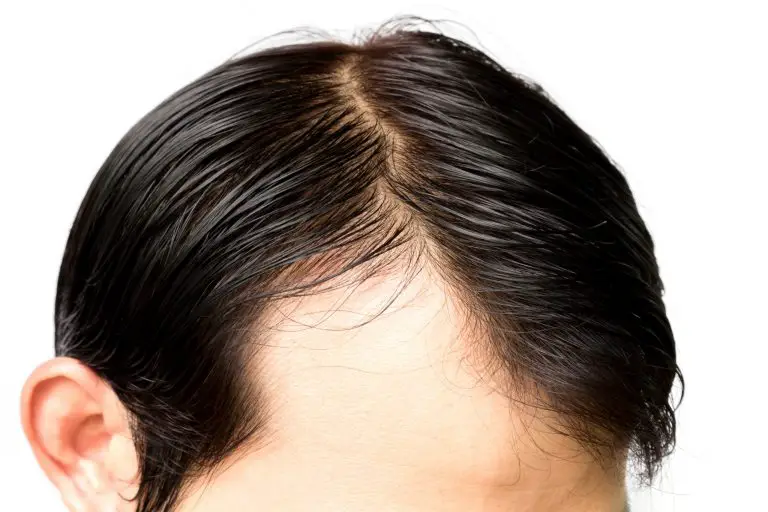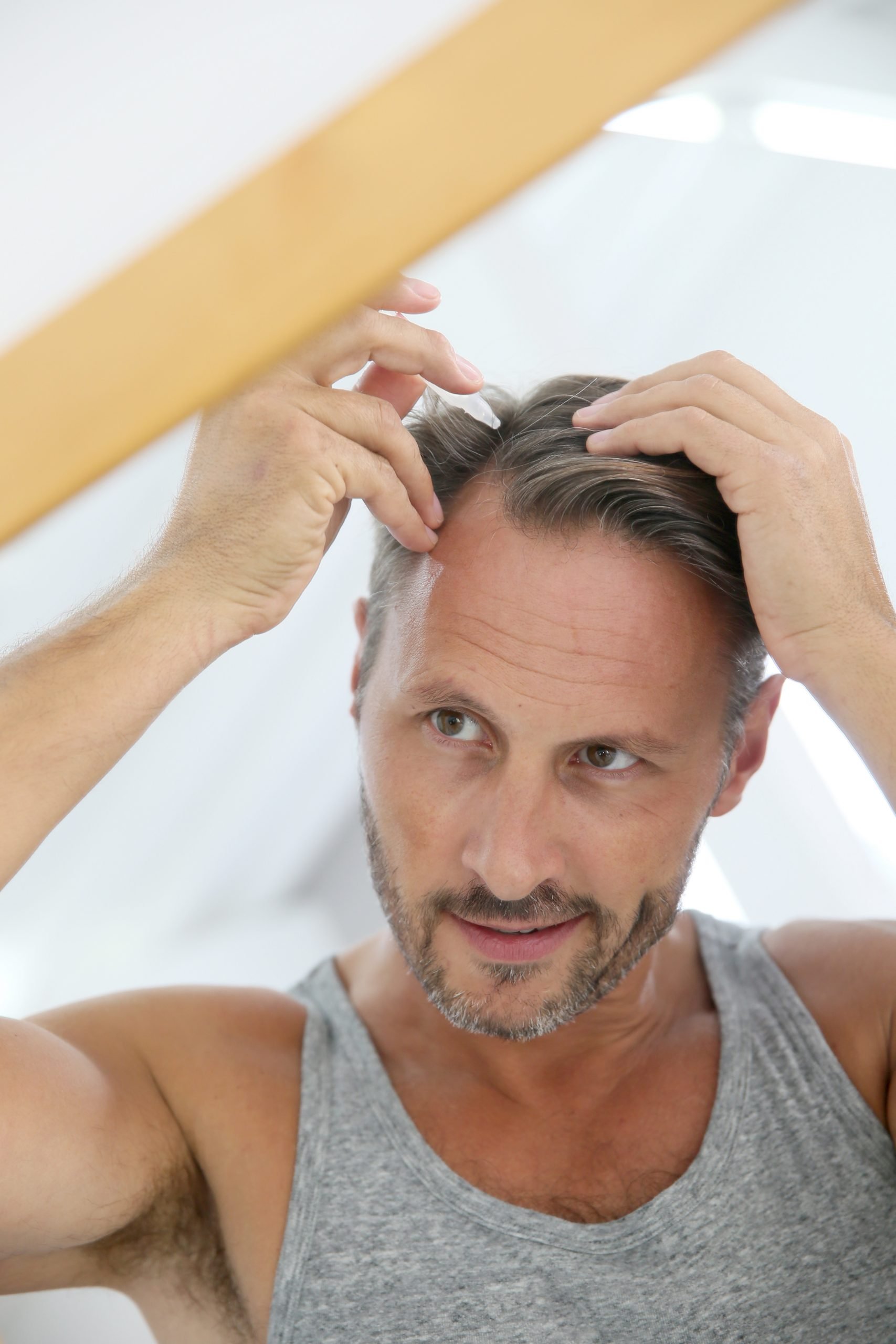
Page Contents
When your hairline is receding, it’s something that can be worrying, no matter what the reason is. While a mature hairline is almost expected once you reach a certain age, it’s important to know the difference between nature and starting to bald.
The sooner you catch it, the easier it will be to keep your full head of hair. This is why it’s important to catch it early. To start with, we’ll go over what a mature hairline is, and then we’ll take a closer look at frontal balding.
A Maturing Hairline
A mature hairline is something that a man can start to experience at as young as 17 years old. Most of the time, you can expect this to happen before you turn 30. This is a normal process and shouldn’t alarm you. It doesn’t mean you’re going to be bald.
Instead, it’s a sign that your body is maturing. The effect is called a maturing hairline. A juvenile hairline is something that can be compared to the light and fluffy “baby” hair in that that we grow out of.
While technically possible to keep your juvenile hairline, the chances of this happening are less than 5%. Other than changes in your hairline, the rest of your hair continues to grow normally. In fact, you may not even notice that your hairline has receded at all.
Generally, a mature hairline has a V-shape. Don’t panic if you lose a bit of hair when you’re brushing it. This is normal. On the other hand, if you’re losing chunks of hair, or large amounts, then it may be more than a maturing hairline.

Pattern Balding
Pattern balding is something that can happen at any age. When this happens, your hairline continues to recede, or move back. Sometimes, it recedes until you’re completely bald.
If you’re worried about balding, here are some signs to watch for.
Have you noticed that the hairs near the edge of your hairline are getting thinner than the rest of your hair? From there, they tend to fall out or get choked as the follicles shrink.
A second common sign is unevenness. When your hairline is maturing it’s usually does it evenly. However, when you’re balding, you might notice more unevenness.
If you’re in doubt, the best thing that you can do it look at your family tree. Pattern baldness is often connected to genes. If you have family members who have some form of balding, then you’re more likely to experience it yourself.
The more people in your family that have the balding gene, the more likely it is that you will have the same. If you don’t know your family tree for whatever reason, then consider going to a barber.
Barbers are not the same as hairstylists. They tend to know the difference between the two. Most barbers will not only be able to tell you this, but they’ll also be able to tell if you’ve gotten your mature hairline yet.
More than this, they’ll be able to tell you the different grades of pattern baldness.
Related Reading
The Grades Of Pattern Baldness
In order to understand pattern balding, it’s important to understand how the different grades or stages are categorized. As a general rule, the Hamilton-Norwood scale is what’s commonly used to grade balding. Lower numbers means less balding, and higher numbers means more balding.
This scale was published in 1975 by Dr. Norwood. While it does categorize the different stages of hair loss, some people might fit snugly between two of these categories.
Stage 1
This is the first signs of balding. Usually, at this stage you may not even realize that you’re balding at all. If you do notice your hairline is a little further back, you might assume that it’s simply your mature hairline.
Stage 2
At this stage, you’ll start to notice that the hair just above your temples has receded more than normal. This will form what’s known as a mild widow’s peak. This means the hair of your forehead hasn’t started to recede just yet. At this point it won’t look too noticeable, but it’s still there.
Stage 3
This stage has a pronounced widow’s peak as your hair continues to recede. This usually happens around your temples. The peak may stand out from the rest of your hair by inches. It’s almost impossible to miss.
Stage 4
During this stage of hair loss, the widow’s peak starts thinning. Also, you’ll start to get an area where your hair is thinning, closer to the back of your head. As this stage progresses you’ll have an actual bald spot that isn’t connected to the still-receding hair above your temples.
Stage 5
There is now a definite bald spot on the top back part of your head. It’s no longer connected to the bald lines that are moving back. Also, your widow’s peak is getting more narrow, and will fade until there’s hardly any width left.
Stage 6
In this stage, the bald spot on the back of your head has finally connected to the other bald areas. Your widow’s peak is also gone. While you may still have a few stray hairs that are thin on the top of your head, for the most part the only hair you have is on the sides.
Stage 7
Any stray hairs that you have on the top are long gone. The baldness will have gone down the sides of your head. This is the last stage before going completely bald. Don’t worry, you can still be successful as a bald man. Check out 4 Bald Men Every Start-Up Should Listen to and Why.
Causes And Cures

In order to know what you can do about balding, it’s important to know what causes it. When it comes to pattern balding, around 80% of the time it’s simply genetics. This is often referred to as Male-Pattern Baldness, or MPB.
This condition means that you’ll make more of the hormone DHT which leads to hair loss. The hormone attaches to the androgen receptors. It’s thickest just above your temples, and thinnest on the sides of your head. This is what causes the baldness to progress in a very specific pattern.
Depending on the severity of the baldness, there are a variety of treatments you can try to help prevent and even reverse this. These include everything from using shampoos to applying hair masks.
Some of the most popular remedies are Minoxidil and Finasteride. Many tout the benefits of micro-needling. In more severe cases, you can go to a doctor and be tested for mineral deficiencies. They can also test for fungal infections which can cause hair loss all on their own.
Of course, if either of these are found, you’ll be given antifungal medications and possibly be told to take supplements. Your doctor can also give you prescription medication to help you get your hair back.
If none of these options work, then you may have no other option than to have a hair transplant.
Conclusion
While a maturing hairline may feel like you are starting to bald, most hair loss specialists don’t even consider it to be balding at all.
If there are people in your family that are bald or you are over 30, and you’ve gotten your mature hairline already, then it may be a concern.
About 1 in every 4 men have some degree of balding, making this one of the most common problems for men. Sometimes it can start happening earlier than we’d like, even before the age of 20.
You may even start to bald for seemingly no reason, and then stop balding without the use of any treatments. Even stress can cause our bodies to do strange things.
If this happens, it’s possible that you may have a mature hairline that’s more of a V shape than most. That being said, there’s still so much that’s unknown about balding.
Be sure to watch your hairline for those “baby” hairs that are thinner and often lighter than the rest of your hair.
Tired of chasing down hair growth solutions without the results you’re after? Make sure you’re using the 3 hair loss products known to work before experimenting with alternative solutions – you may be surprised with how effective those 3 alone can be.






